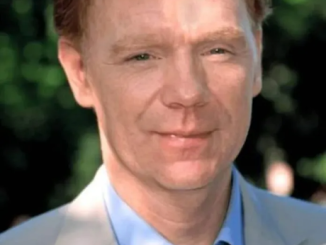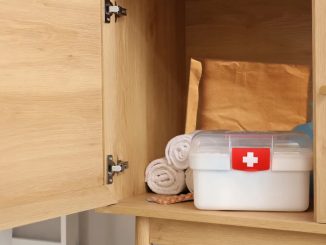Social Media’s Role in Redefining Beauty Standards
Social media has revolutionized nearly every aspect of modern life, and its influence on beauty standards is no exception.
For decades, beauty ideals for women have been narrowly defined. From Marilyn Monroe’s curvaceous figure in the 1950s to the ultra-thin frames of 1990s supermodels, society’s idea of the “perfect” body has shifted over time. However, a consistent theme has been the pressure on women to conform to a singular standard, often dictated by pop culture and advertising.
In contrast, social media has significantly expanded the definition of beauty. Platforms like Instagram, TikTok, and YouTube now feature creators of all sizes, shapes, and ethnicities. This inclusivity is reshaping how people view their bodies, offering representation that goes far beyond the size 0 models traditionally seen in mainstream media.
Plus Size Becomes the New Norm
As American women increasingly embrace body positivity and size inclusivity, research shows that the average body size is also changing.
A study published in the International Journal of Fashion Design, Technology and Education highlights a shift in what is considered “average.” While it was once commonly stated that the average size for American women was 14, the study reveals that the average woman now wears between a misses size 16 and 18, which corresponds to a women’s plus size 20W. Additionally, the average waist size has increased from 34.9 inches to 37.5 inches over the past two decades.
“We hope this information reaches both the industry and consumers,” said Susan Dunn, one of the study’s lead researchers, in an interview with Today. “Understanding these figures can have a profound impact on women’s self-esteem. The apparel industry needs to recognize that these women are here to stay and deserve inclusive clothing options.”
Why Are American Women Getting Larger?
The average size of American women has increased over the past several decades. According to the CDC, the average weight of an American woman is now approximately 170.6 pounds, compared to 140 pounds in the 1960s. Multiple factors contribute to this trend:
- Lifestyle Changes: Sedentary jobs, higher calorie consumption, and an increased reliance on processed foods play significant roles.
- Cultural Shifts: Greater acceptance and celebration of diverse body types have reduced societal pressure to adhere to extreme dieting.
- Genetics and Environment: Genetic predispositions and environmental factors, such as stress and access to healthy foods, also influence body size.
Beyond Appearance: A Health Perspective
While larger body sizes are increasingly celebrated, the medical implications cannot be ignored. Obesity rates have doubled since 1990, according to the World Health Organization. Social media, while fostering inclusivity, has also been criticized for promoting unhealthy lifestyles and sedentary habits that contribute to weight gain.

The Mayo Clinic emphasizes that “obesity isn’t just a cosmetic issue.” It is a medical condition that increases the risk of numerous health complications, including heart disease, diabetes, high blood pressure, high cholesterol, liver disease, sleep apnea, and certain types of cancer.
A New Era of Beauty
True beauty lies in celebrating individuality rather than conforming to a rigid standard. Social media has been instrumental in spreading this message and has the potential to reshape beauty norms in a positive way when used thoughtfully.
What’s your take on social media’s impact on beauty standards? Share your thoughts and pass this article along to gather more perspectives!
Many people don’t know this ancient sewing secret.
Sewing has been an essential craft for centuries, yet many of the most effective techniques remain hidden from the modern world. Whether you’re a beginner or an expert seamstress, knowing a few ancient sewing secrets can make your work easier, neater, and more durable. Let’s uncover these time-tested tricks that can change the way you sew forever.
The Lost Art of Traditional Sewing Techniques

Sewing is more than just stitching fabric together—it’s an art form that requires precision and patience. Over generations, tailors and seamstresses have developed techniques to make their work more efficient. Unfortunately, many of these methods have been forgotten in the age of fast fashion. Here are some of the best-kept sewing secrets that will enhance your craftsmanship.
1. Strengthen Your Thread with Beeswax
Have you ever had your thread tangle or break while sewing? That’s because raw thread lacks the strength and smoothness needed for seamless stitching. This is where beeswax comes in—a natural way to fortify your thread.
How to Use Beeswax on Thread:
✔ Take a small piece of beeswax (available at craft stores or from natural sources).
✔ Run your thread through the wax, coating it lightly.
✔ Use a warm iron or your fingers to set the wax into the thread, ensuring smoothness.
By waxing your thread, you prevent knots, reduce fraying, and make hand-stitching smoother. This method has been used by tailors for centuries, and it’s still one of the best ways to extend the life of your stitches.
2. Mark Fabrics with Dry Soap for Easy Removal
Fabric markers and chalk can sometimes leave stains or require special erasers, but there’s an easier solution—dry soap. If you’ve never tried this trick before, you’re missing out on one of the simplest, most effective ways to mark fabric.
Why Use Dry Soap Instead of Chalk?
✔ It glides smoothly on fabric, leaving a visible mark.
✔ It washes away completely without leaving a trace.
✔ It’s eco-friendly and doesn’t create dust like chalk.
Simply take an old, dry bar of white soap, sharpen the edges (like a piece of chalk), and use it to mark where you need to cut or stitch. Once your sewing is complete, the soap will dissolve when the fabric is washed—no mess, no stains!
3. The Magic of the Loop Knot Technique
Sick of knots coming undone while sewing? Instead of the usual single or double knots, try the loop knot technique to secure your stitches firmly.
How to Tie a Loop Knot for Sewing:
- Thread your needle and pull the thread through.
- Create a small loop at the end of the thread.
- Pass the needle through the loop and pull tight.
This method keeps your stitches secure without causing bulk or weakening the fabric, making it perfect for delicate materials.
4. Use a Safety Pin to Thread Elastic or Drawstrings

Have you ever struggled to thread elastic through a waistband or a drawstring through a hoodie? Instead of fumbling with your fingers, use a safety pin—a simple yet powerful sewing hack.
How to Thread Elastic with a Safety Pin:
✔ Attach a safety pin to one end of the elastic or string.
✔ Insert the pin into the casing and push it through, guiding it with your fingers.
✔ Once it reaches the other end, pull it out and adjust the elastic.
This old-school trick saves time and frustration, making sewing tasks more manageable.
5. Prevent Frayed Edges with a Simple Hand-Sewn Finish
Fabric edges often fray, leading to unraveling seams and a messy appearance. While overlock machines (sergers) can prevent fraying, they aren’t always accessible. The whipstitch method is a great alternative for hand-sewers.
How to Do a Whipstitch for Fray Prevention:
✔ Thread a needle with strong thread.
✔ Loop the thread around the fabric edge, sewing closely together.
✔ Ensure even spacing for a clean, durable finish.
This technique has been used for centuries, especially in historical garment-making, and remains one of the best ways to keep fabric edges neat and long-lasting.
6. The Basting Stitch: Your Secret to Perfect Seams

Many beginners skip basting stitches because they see them as unnecessary, but professionals know they are a game-changer.
What is a Basting Stitch?
A long, temporary stitch that holds fabric layers together before final sewing. It helps ensure alignment and precision before committing to permanent stitching.
✔ Use long, loose stitches with a contrasting thread.
✔ Check the fit or design before securing the final seam.
✔ Once satisfied, sew the permanent stitches and remove the basting thread.
This method prevents mistakes and gives a more polished, professional finish to your sewing projects.
Bringing Back Time-Tested Sewing Techniques
Sewing may seem simple, but these ancient techniques show that a little extra effort can make a big difference. Whether you’re working on a new garment, a repair, or a creative project, these tricks will elevate your skills and make your work more durable and precise.
So, why not give these methods a try? By incorporating beeswax for thread strength, dry soap for marking, loop knots for security, safety pins for threading, whipstitching for fray control, and basting for precision, you’ll be stitching like a pro in no time.
Conclusion: A Stitch in Time Saves Nine
The beauty of sewing lies in mastering the little tricks that make each stitch stronger and each project more seamless. These ancient sewing secrets have stood the test of time for a reason—they work. So next time you pick up a needle and thread, remember that the simplest solutions are often the most effective.
Ready to take your sewing skills to the next level? Try these techniques, and see the difference for yourself!




Leave a Reply